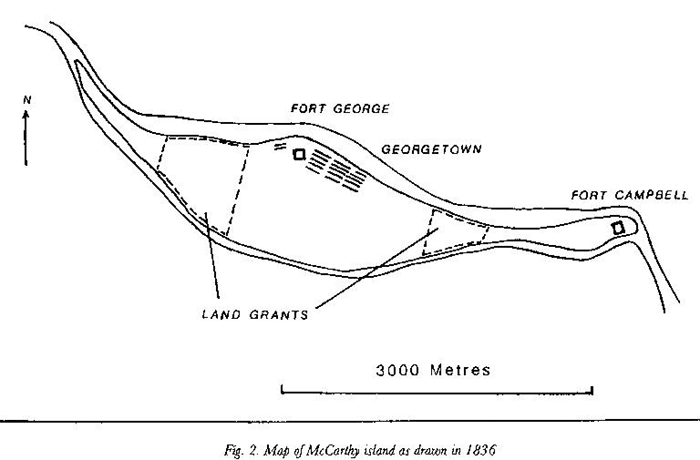| Author |
 Topic Topic  |
|
Sister Omega

United Kingdom
2085 Posts |
 Posted - 04 Dec 2006 : 20:50:58 Posted - 04 Dec 2006 : 20:50:58



|
Kons I think you are arguing just for the sake of it. Jangjangbureh was a major trading post in Gambia from 15th to the beginning of the 19th Century. The major export from Gambia at that time was human cargo enslaved Africans. Georgetown was Gambia's first Capital, precisely because of its strategic position to the African interior. Therefore unless you have evidence to substantiate your claim about there being no slave house janjangbureh is lack dismissing there was a slave trade in Gambia.
It makes strategic sense for Jangjangbureh to be a trading post in slaves in exchange for guns, rum etc. The Slave Houses location would be logistically convenient for imprisoning slaves ready for transportation up the river and easier to recapture them if they tried to escape from the island and quicker to join sloops in the Atlantic.
Kon's I think you are getting the history of MaCCarthy Island confused with the transition of colonialism when the island was used to accommodate liberated enslaved Africans who were illegally being transported after the Abolition in 1807.
Peace
Sister Omega |
Peace
Sister Omega |
 |
|
|
kondorong

Gambia
4380 Posts |
 Posted - 04 Dec 2006 : 21:10:47 Posted - 04 Dec 2006 : 21:10:47


|
I am not disputing the occurence of slavery. The problem is this building was never mentioned in 1785 or 1823 when the British bought the island. If the building was not there, then it could not have been a slave house becasue by that time, the island was a place for liberated people. If the building was there before the british, then how come it was never mentioned and they ended up building a mud fort called Fort George.
It makes every sense to use this stone house as a fort in 1823 instead of a mud fort. Can you see the logic.
I am not disputing that slavery never existed before this island was bought. |
 |
|
|
Sister Omega

United Kingdom
2085 Posts |
 Posted - 04 Dec 2006 : 21:43:12 Posted - 04 Dec 2006 : 21:43:12



|
I don't think the British would of coverted a slave house into a building for their own use whether it was made of stone wood or mud. They would of built something for their own purposes. It is often presumed that everything is meticulously recorded by the British this is not so. Anyway to be able to concur with your hypothesis we would have to cross reference documents from Africa Companies House to see whether or not they used these premises during their period of operation. However as this company was disolved in early 19th Century. The question is what happened to its documents. If someone out their knows meybe they can solve this riddle or alternatively carrying out carbon dating to see how old the brickwork is.
Peace
Sister Omega |
Peace
Sister Omega |
 |
|
|
gambiabev
United Kingdom
3091 Posts |
 Posted - 04 Dec 2006 : 22:21:55 Posted - 04 Dec 2006 : 22:21:55


|
I agree Sister, arguing small points doesn't matter when you look at the big picture and the enormity of it. The slave trade was massive, cost millions of lives and had an enduring impact on a whole continent. Whether one building was or wasnot a slave house is of very little interest to me. If it is a historical building it is worth preserving anyway,whatever its history.
Like the history of the holocaust, we should never forget the slave trade and never forget mans inhumanity to man.
My own feeling is that we need to focus on the slave trades that are still happening and try to prevent it. The slavery of eastern european women to the west as sexual objects. The slavery in Africa of one group to another, the caste system in India and so on.........
The argument over this one building seems quite pedantic to me!! I would say to all those involved in the argument, get a perspective and start posting about important things! |
 |
|
|
njucks
Gambia
1131 Posts |
 Posted - 04 Dec 2006 : 23:01:15 Posted - 04 Dec 2006 : 23:01:15


|
Kondorong you are RIGHT. i have to give it to you. atleast my research is pointing in favour of your argument.
i have just downloaded this journal which actually gives a history of the island and details of the first expedition etc. the Island was purchased for £1000 to be used as a penal colony due to the lost of the American colonies. The House of Commons established a commmitee to consider it and an expedition was dispatch, but they voted against it when it a surgeon advised that Europeans with not last a month possibly due to malaria.
http://links.jstor.org/sici?sici=0016-7398(199407)160%3A2%3C136%3AGOTCCA%3E2.0.CO%3B2-O
apparently they found some muslims there as you said in Morrocunda and used the island to host liberated africans due to overcrowding in Freetown. The first occupant were a british sergeant, 12 soldiers from the West Indian Regiment and they built a forth to defend themselves '' from dangerous inhabitants'' on either banks
Also, contrary to what we might think actually the British presence on the Island help against slavery. when it was settled in 1823, the British flag was raised and '' whereever the british flag flew, liberty was guaranteed to all''. enslaved people sound knew about this and it became a Mecca for freedom. perhaps this is the confusion for the flag pole .!!!
a Methodist and Wesleyan missions were also establish for them and trading and farming started etc. but a fire destroyed many of the building.they also suffered from locust attack
i would assumed since this is a peer reviewed journal that the authors must have done extensive research, thus its fair to say it WAS NOT A SLAVE HOUSE.more than 1200 liberated africans were settled there alone.!!
well GTA or Arts & Culture should be interested in this debate.
it might be one building but i have learnt a lot about MacCarthy Island that i think many average gambians didnt know about
i'm am convinced, there is also a map of the Island if you want i can paste it here. there is no building on the map of 1835. |
Edited by - njucks on 04 Dec 2006 23:06:46 |
 |
|
|
kondorong

Gambia
4380 Posts |
 Posted - 05 Dec 2006 : 00:24:30 Posted - 05 Dec 2006 : 00:24:30


|
It looks like you read the research topic titled: Guests of the Crown: History of Liberated Africans on Maccarthy Island. I may not be exact with the title.
I am still open to correction but there is no evidence it was a slave house which is not the same as that there was no slave activity in the area. |
 |
|
|
kondorong

Gambia
4380 Posts |
 Posted - 05 Dec 2006 : 00:32:00 Posted - 05 Dec 2006 : 00:32:00


|
quote:
Originally posted by gambiabev
I agree Sister, arguing small points doesn't matter when you look at the big picture and the enormity of it. The slave trade was massive, cost millions of lives and had an enduring impact on a whole continent. Whether one building was or wasnot a slave house is of very little interest to me. If it is a historical building it is worth preserving anyway,whatever its history.
Like the history of the holocaust, we should never forget the slave trade and never forget mans inhumanity to man.
My own feeling is that we need to focus on the slave trades that are still happening and try to prevent it. The slavery of eastern european women to the west as sexual objects. The slavery in Africa of one group to another, the caste system in India and so on.........
The argument over this one building seems quite pedantic to me!! I would say to all those involved in the argument, get a perspective and start posting about important things!
History only becomes relevant if it is true. Tourist go to this building with the hope that it was a slave house. Students are taught in school also. But the fact remains that it is not a slave house. So we need to teach the correct version of our history. As for slavery, we dont need to teach that it existed. Its obvious to all that it did take place but we have to agree that the slave house was not a slave house after all.
By the way, if you have better topics bring them on. The bantaba is an open forum. Scratch your brain and flood us with more stimulating topics. |
 |
|
|
Sister Omega

United Kingdom
2085 Posts |
 Posted - 05 Dec 2006 : 11:48:59 Posted - 05 Dec 2006 : 11:48:59



|
Njucks please can you cut and paste in your source document? The link isn't working. Of course the British presence helped against slave trafficking in 1823 because the British had already made slave trafficking illegal in 1807. Therefore the Royal Navy was engaged in interspecting illegal slave vessels within its colonial terroritries. What needs to be established is at anytime before abolition was there a Slave House on the ISland before Abolition used for exporting slaves or was this a house used for some other fumction as suggested with ex-slaves.
Peace
Sister Omega |
Peace
Sister Omega |
 |
|
|
njucks
Gambia
1131 Posts |
 Posted - 05 Dec 2006 : 12:25:32 Posted - 05 Dec 2006 : 12:25:32


|
ok i have tried to paste the picture but can't so i have sent you a private message (not email). also i have email it to momodou to paste it.
another link form Columbia Univerity also states that a 'trading post' was built after wards.
http://www.columbia.edu/~msj42/CentralRiver.htm |
 |
|
|
kondorong

Gambia
4380 Posts |
 Posted - 05 Dec 2006 : 18:12:57 Posted - 05 Dec 2006 : 18:12:57


|
quote:
Originally posted by njucks
ok i have tried to paste the picture but can't so i have sent you a private message (not email). also i have email it to momodou to paste it.
another link form Columbia Univerity also states that a 'trading post' was built after wards.
http://www.columbia.edu/~msj42/CentralRiver.htm
There is an error in this link. The island was not bought in 1832 but 1785. The british settled there in 1823. This was the same year that the protectorate was extended to this island. It may have been a typo. Instead of 1823, they typed 1832.
I have noticed that most documents only mention acquisition in 1823 and not 1785. It was actually acquired in 1785 and settled in 1823 where a fort was built called fort George which later became Georgetown. |
 |
|
|
njucks
Gambia
1131 Posts |
 Posted - 05 Dec 2006 : 18:21:13 Posted - 05 Dec 2006 : 18:21:13


|
yes, you are right. the actual purchase was in 1785 for a penal conlony but that was abandonned. interest in the island started again in 1823 due to successful interception of pirate ships.
i think most of the facts have now been established, the Janjanbure Council if they are reading could indeed exploit many of these facts to their commercial advantage.
we must now move on to December , Momodou permitting it , Momodou permitting it
December will be the Bantaba Month of Gambian Youths and the Challenges they face. |
 |
|
|
Sister Omega

United Kingdom
2085 Posts |
 Posted - 05 Dec 2006 : 19:38:02 Posted - 05 Dec 2006 : 19:38:02



|
Just to add that the source you posted in didn't quote their references or biblography therefore can't be deemed a reliable academic reference because we can't cross reference it. Jangjangbureh Council would need to get hold of the original or duplicate deed of the Island. Either from Banjul, Serria Leone, London or it could be anywhere that's if it still existence. Unfortunately many important documents about Africa during the Transatlantic Slave Trade are hidden in books in Private Collections or have been destroyed.
Peace
Sister Omega |
Peace
Sister Omega |
 |
|
|
Momodou

Denmark
11804 Posts |
 Posted - 05 Dec 2006 : 21:24:13 Posted - 05 Dec 2006 : 21:24:13


|
Here is the drawing of the Island in 1836 from Njucks.

|
A clear conscience fears no accusation - proverb from Sierra Leone |
 |
|
|
Momodou

Denmark
11804 Posts |
 Posted - 05 Dec 2006 : 21:34:24 Posted - 05 Dec 2006 : 21:34:24


|
quote:
Originally posted by njucks
yes, you are right. the actual purchase was in 1785 for a penal conlony but that was abandonned. interest in the island started again in 1823 due to successful interception of pirate ships.
i think most of the facts have now been established, the Janjanbure Council if they are reading could indeed exploit many of these facts to their commercial advantage.
we must now move on to December , Momodou permitting it , Momodou permitting it
December will be the Bantaba Month of Gambian Youths and the Challenges they face.
This has been an interesting topic and I have also learnt a lot from the informations received.
Njucks, you know the discussions emerge according to the mood of Bantaba users and events back home so we can't predict..... The topic you suggest is very important and there is no objection here. The topic you suggest is very important and there is no objection here. |
A clear conscience fears no accusation - proverb from Sierra Leone |
 |
|
|
Momodou

Denmark
11804 Posts |
 Posted - 08 Jan 2007 : 22:21:48 Posted - 08 Jan 2007 : 22:21:48


|
Hi All,
The following is an update. It is an answer from a highly placed person at the National Council of Arts and Culture on the question as to whether there was a slave house in Janjanbureh.
----------------------------------------------
A study conducted by the NCAC and the Gambia National Commission for UNESCO in 1999, point to the fact that there is no factual evidence that suggests that there was a slave house in Janjangbureh. In page 50, the study states "The study has also found that the so called slave house was a warehouse belonging to the CFAO,and could not have been used for perpetrating the slave trade. In this regard it is noteworthy that Georgetown(Janjangbureh) was settled by the British long after the passing of the abolition act. The building style and materials of this structure are also reminiscent of other warehouses built by European traders in Banjul and all along the river. Moreover, the jetty adjacent to the building which should be contemporaneous with the warehouse has a carefully incised date reading 1899, at its base." |
A clear conscience fears no accusation - proverb from Sierra Leone |
 |
|
 Topic Topic  |
|

